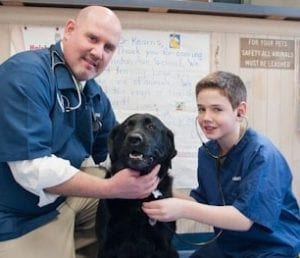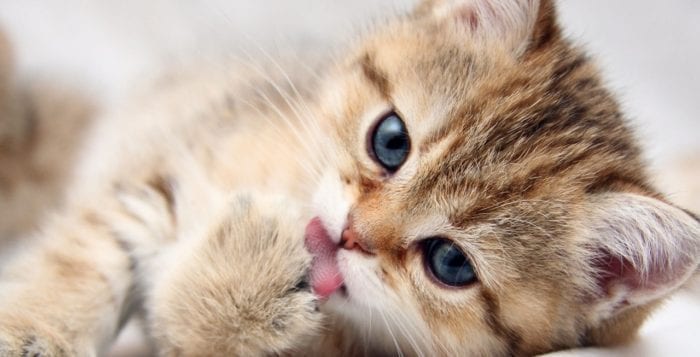By Matthew Kearns, DVM
 The weather is warming up and the days are getting longer. This can only mean one thing: kittens, kittens, kittens and more kittens! All these kittens need homes, but care should be taken in introducing them to your home if you have other cats. The two most common diseases that we worry about before introducing cats to our households are the feline leukemia virus (FeLV) and the feline immunodeficiency virus (FIV).
The weather is warming up and the days are getting longer. This can only mean one thing: kittens, kittens, kittens and more kittens! All these kittens need homes, but care should be taken in introducing them to your home if you have other cats. The two most common diseases that we worry about before introducing cats to our households are the feline leukemia virus (FeLV) and the feline immunodeficiency virus (FIV).
Just to be clear: These viruses are no risk to humans — these viruses are species specific, cat to cat only (even dogs are safe). However, healthy looking kittens could be carrying (and potentially infecting other cats) with these viruses. Also, the prevalence of these viruses is low (both less than 10 percent in multiple studies) in kittens adopted from shelters and rescues.
FeLV and FIV are in a family of viruses called Retroviridae, or retroviruses. All retroviruses have the unique ability to incorporate themselves into the DNA of normal cells. This means once infected, always infected, and the diseases these viruses cause in cats are always fatal. FeLV causes leukemia and other forms of cancer (e.g., lymphoma) as well as suppresses the immune system.
FIV is similar to the human immunodeficiency virus (HIV) in that the virus over time destroys the immune system and the most benign infections eventually become lethal. To compound the problem a kitten or cat may be positive for infection and negative for any symptoms for months or even years.
The nice thing about the tests that are available are that they are point of care tests, or tests that can be run at the shelter/rescue/animal hospital and have results within less than 15 minutes, as well as these tests also rely on antibodies against these viruses.
Kittens that are infected with FeLV or FIV will produce antibodies and test positive long before they start showing signs of disease. The flip side of this equation is there is a lag time between when the kitten was infected and when they produce enough antibodies to produce a positive on the test.
It takes about four weeks after infection to test positive on the test for FeLV and could take three to four months to test positive after infection for FIV. Most kittens are adopted between eight to 10 weeks of age so there is a window where a healthy-looking kitten could be carrying the virus.
Someday we will have effective medications to cure these diseases but, for now, we don’t. The best thing we have is testing and, if positive, isolating the kittens that are positive to reduce the risk of spreading infection.
Make sure that before introducing a new kitten to your household, there is proof that he has been tested. If testing was not done (even if the mother or littermates tested negative), I recommend testing each individual kitten through your own veterinarian before introducing the kitten to your other cats.
Dr. Kearns practices veterinary medicine from his Port Jefferson office and is pictured with his son Matthew and his dog Jasmine.





